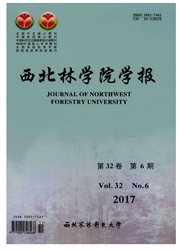

 中文摘要:
中文摘要:
基于开始 TEA-COM RRC 和南京大学的大气的科学的部门开发的地区性的综合环境模型系统( RIEMS 2.0 ),在 Heihe 河盆( HRB )上的观察和遥感的数据集被用来重新校准模型参数包括地形学举起,土地盖子类型,浸透的土壤水潜在的、浸透的土壤土壤的水力的电导率,地潮湿能力,枯萎的点潮湿,土壤孔,和参数 b 水力的 condu 为到 2000 年 12 月 31 日的从 1 月 1 日的时期的连续模拟用地区性的气候模型被进行,与象开车的地的 NCEP-FNL 分析数据。学习集中了于模型的能力在 HRB 模仿降水。分析结果显示出下列:( 1 )为 降水,模型能在 HRB 的不同区域复制空间模式和季节的周期很好,模仿的 降水在 HRB 的上面的活动范围被过高估计并且在 HRB 的更低的活动范围低估了,并且季节的 降水偏爱主要在观察的39.9%9.6%的范围,它与 IPCC 报告( 2001 )主要一致。(2 ) 模型能在不同区域复制五降水的相当时间的进化。在模仿并且观察的五降水之间的关联系数分别地在 HRB 的上面、中间、更低的活动范围是 0.8123, 0.5064,和 0.7033。他们到达了 1% 的意义水平。(3 ) 一个高分辨率的地区性的气候模型的动态 downscaling 被用来克服缺乏,并且直接驾驶在 HRB 联合了生态水文学、社会经济的进程的综合模型长期, high-temporal/spatial-resolution 在 HRB 的气象学的数据集。
 英文摘要:
英文摘要:
Based on the Regional Integrated Environmental Model System (RIEMS 2.0) developed by START TEA-COM RRC and Department of Atmospheric Science of Nanjing University, a dataset of observation and remote sensing over the Heihe River Basin (HRB) was used to recalibrate the model's parameters, including topography elevation, land cover type, saturated soil water po- tential, saturated soil hydraulic conductivity, field moisture capacity, wilting point moisture, soil porosity, and parameter b of soil hydraulic conductivity, to build a high-resolution regional climate model for the HRB. Continuous simulation for the period from January 1 to December 31, 2000 was conducted using the regional climate model, with NCEP-FNL reanalysis data as the driving fields. The study focused on the ability of the model to simulate precipitation in the HRB. The analysis results showed the following: (1) For precipitation, the model could reproduce well the spatial pattern and seasonal cycle in different regions of the HRB, simulated precipitation was overestimated in the upper reaches of the HRB and underestimated in the lower reaches of the HRB, and seasonal precipitation biases were mostly in the range of -39.9%-9.6% of observations, which is mostly consistent with the IPCC report (2001). (2) The model could reproduce reasonably temporal evolution of pentad precipitation in different regions. Correlation coefficients between the simulated and observed pentad precipitation were 0.8123, 0.5064, and 0.7033 in the upper, middle, and lower reaches of the HRB, respectively. They reached a significance level of 1%. (3) Dynamical downscaling of a high-resolution regional climate model was used to overcome the deficiency of long-term, high-temporal/spatial-resolution meteorological dataset in the HRB, and to drive directly the integrated model that coupled ecological-hydrological and socioeco- nomic processes in the HRB.
 同期刊论文项目
同期刊论文项目
 同项目期刊论文
同项目期刊论文
 Simulation of a Freezing Rain and Snow Storm Event over Southern China in January 2008 Using RIEMS 2
Simulation of a Freezing Rain and Snow Storm Event over Southern China in January 2008 Using RIEMS 2 期刊信息
期刊信息
